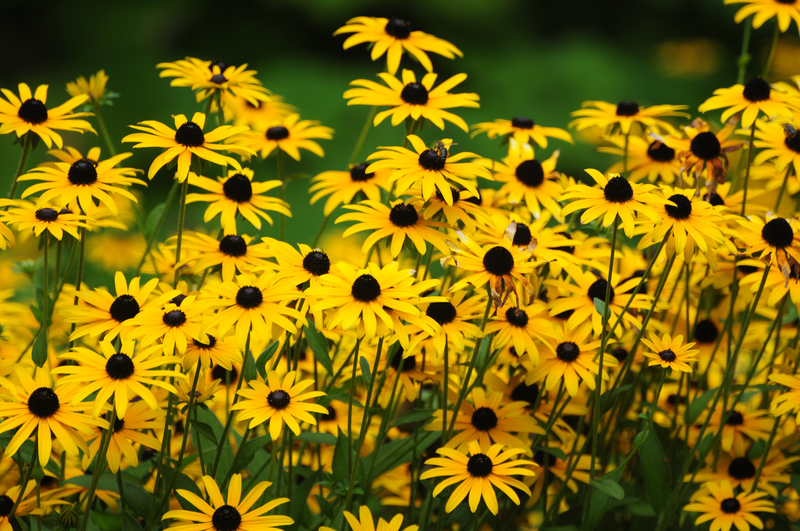Breathing Life into an Overgrown Garden: Where to Begin
Posted on 29/08/2025
Breathing Life into an Overgrown Garden: Where to Begin
Is your once-beautiful garden now overrun with weeds, brambles, and tangled plants? Many homeowners face the daunting challenge of reviving an overgrown garden. The good news is, with patience and a step-by-step approach, you can bring new life to your neglected outdoor space, transforming it into a lush and vibrant haven. In this comprehensive guide, we'll unveil expert tips to help you reclaim, restore, and revitalize your tangled garden retreat.
Understanding the Challenge: What Makes a Garden Overgrown?
An overgrown garden typically results from months--or even years--of neglect, poor planning, or simply life getting in the way. Left unchecked, weeds take over, shrubs sprawl unchecked, and former flower beds become a mass of tangled growth. Breathing life into an overgrown garden requires both a methodical and compassionate approach. Recognizing the main issues in your garden is the essential first step to begin the transformation.
- Weeds and invasive species: Quick to colonize and outcompete your cherished plants.
- Overgrown shrubs and trees: Blocking sunlight, creating dense shade and dropping debris.
- Piled debris and rubbish: Hidden hazards and breeding grounds for pests.
- Compacted, poor-quality soil: Lacking the nutrients needed for new growth.
- Lost structure and design: Original features obscured, making it hard to know where to start.

Step 1: Assess the Garden - Survey and Plan
Before you touch a single plant, take a deep breath and assess your garden. Spend time walking around your garden, notebook in hand, and observe what's there. Look for:
- Areas with the heaviest weed cover
- Trees and shrubs in need of pruning or removal
- Patches where original paths or flower beds are visible
- Fencing, shed, or hardscaping in disrepair
Ask yourself: What features do you want to keep, restore, or remove? Note the amount of sunlight and shade in different areas, and consider your time, resources, and vision. Make a checklist--it will help you organize tasks efficiently.
Step 2: Clearing the Way - Remove Debris and Cut Back Overgrowth
The first actionable step in rejuvenating an overgrown garden is clearing out dense vegetation, weeds, and rubbish. This stage is crucial for revealing the underlying garden structure and giving you space to work.
Gather Your Tools
- Sturdy gloves and protective clothing
- Garden shears, pruners, and loppers
- Rake, spade, and fork
- Wheelbarrow and garden bags
- Pole saw or hand saw for larger trees
Start with Large Debris
- Remove rubbish, fallen branches, or discarded pots.
- Tackle visibly diseased or dangerous plants first, removing them carefully.
- Don't forget sunglasses or goggles when tackling thorny or overgrown shrubs.
Tame and Trim
- Cut back woody shrubs and overgrown bushes, being cautious not to prune aggressively if it's the wrong season.
- Use a hedge trimmer on tough hedges. Remove unwanted saplings and vines that choke structures or trees.
Step 3: Eradicating Weeds and Invasive Plants
Weeds are the bane of any garden restoration project. Begin weed removal systematically:
- Hand-pull weeds after rain, when soil is softer.
- Use a hoe for larger areas, or a garden fork for deep-rooted offenders.
- Dispose of perennial weeds away from your compost pile to avoid reseeding.
- If necessary, cover stubborn patches with light-blocking tarps for a few weeks.
*Tip: Stay vigilant! Even after the initial clear-out, it can take several seasons of weeding to entirely regain control.*
Step 4: Uncovering Hidden Features and Assessing Soil Health
As you clear and weed, you'll start to notice old flower beds, patios, paths, ponds, or other hidden gems. Decide which features you want to restore. Now is also the perfect time to check your soil.
- Test your soil for pH, drainage, and texture.
- Amend the soil: Dig in organic matter such as compost or well-rotted manure to improve fertility and structure.
- Consider installing raised beds or adding mulch for trouble-prone areas.
- Water deeply to help rejuvenate tired ground.
Step 5: Create a Plan for Your Revived Garden
With the chaos tamed, now is the perfect moment to plan your garden's refreshed layout. Whether you want a colorful cottage-style retreat, vegetable and herb beds, or an easy-care wildlife haven, sketch out your ideas. Use flags, stones, or string to define paths, beds, and sitting areas.
- Prioritize restoring existing features before introducing new ones
- Research plant types suitable for your climate and light levels
- Add focal points like birdbaths, benches, or water features
- Consider a mix of perennials, annuals, and shrubs for all-season appeal
Step 6: Planting and Mulching for a Fresh Start
The best part of breathing life into an overgrown garden is planting anew. Reintroduce favorite flowers and shrubs or experiment with new varieties. Start slow--planting just a few beds at a time--so you're not overwhelmed.
Planting Checklist:
- Choose healthy, disease-free plants.
- Add compost to planting holes for a nutrient-rich boost.
- Space plants properly to avoid future overcrowding.
- Water thoroughly after planting, and regularly during establishment.
Finally, apply a thick layer of mulch--wood chips, bark, straw, or well-rotted leaf mould. This suppresses weeds, locks in moisture, and gives beds a tidy, unified appearance.
Step 7: Garden Maintenance - Keeping the Jungle at Bay
After all that hard work, the last thing you want is for your revitalized garden to slip back into chaos. The key is regular, manageable care:
- Weed little, but often. Spend a few minutes each week pulling new invaders.
- Deadhead spent flowers and prune shrubs as needed to encourage bushy, healthy growth.
- Water new plants regularly, especially in dry weather.
- Reapply mulch annually to keep weed seeds from taking hold.
- Keep paths swept, borders neat, and tools clean.
Underline key dates in your diary for seasonal tasks like fertilizing, dividing perennials, or layering bulbs for spring color.
Common Mistakes to Avoid When Rejuvenating an Overgrown Garden
Reviving an abandoned garden can be overwhelming. Avoid these common errors to save time and effort:
- Trying to do everything at once: Focus on one area at a time for measurable progress.
- Neglecting safety: Wear gloves and long sleeves, and be cautious with unknown plants or debris.
- Discarding all plants: Some overgrown plants may be valuable and recover beautifully with pruning.
- Underestimating the workload: Ask friends or hire help for large gardens--don't burn out.
- Skipping soil care: Healthy soil is the backbone of a thriving garden--don't neglect it.
Frequently Asked Questions about Reviving Overgrown Gardens
How long does it take to restore an overgrown garden?
Depending on the size and condition, reclaiming an overgrown outdoor space may take from a weekend to several months. Tackle cleanup, restoration, and planting in phases for the best results.
What are the best plants for a newly cleared garden?
Choose tough, resilient plants that will quickly cover bare soil and outcompete any returning weeds. Consider lavender, hardy geraniums, daylilies, ornamental grasses, and native shrubs. For vegetable beds, start with easy options like beans, radish, or lettuce.
Can I restore a garden all on my own?
Smaller gardens are manageable solo, but for very large or neglected plots, don't hesitate to enlist help--family, friends, or even local landscapers. Sharing the work makes the process more enjoyable and quicker.
Should I remove all weeds at once?
It's often most efficient to control weeds section by section, particularly if time and energy are limited. Use mulch and groundcover plants to suppress future weed growth.

Conclusion: Your Overgrown Paradise Awaits
Breathing life into an overgrown garden is both a challenge and an opportunity. With each weed cleared and flower planted, you reclaim not just your landscape, but also your enjoyment of nature's beauty right at home. By beginning with a plan, working efficiently, and caring for your garden as it grows, you'll soon find yourself surrounded by the vibrant colors and fragrances of a renewed paradise. Remember: Each transformation begins with a single step--so take yours today, and let your rejuvenated garden become a source of pride and delight for years to come.
Ready to breathe new life into your overgrown garden?
Share your progress with friends, join gardening forums, or seek out local workshops to stay inspired. Happy gardening!
```


